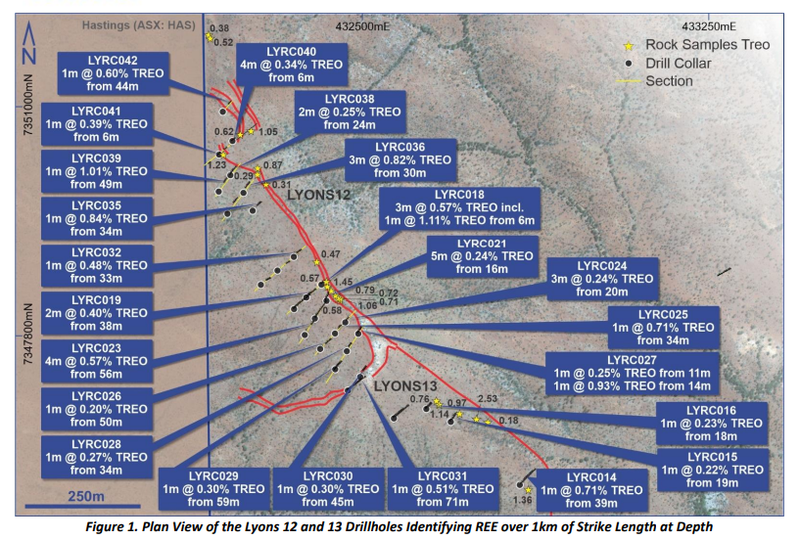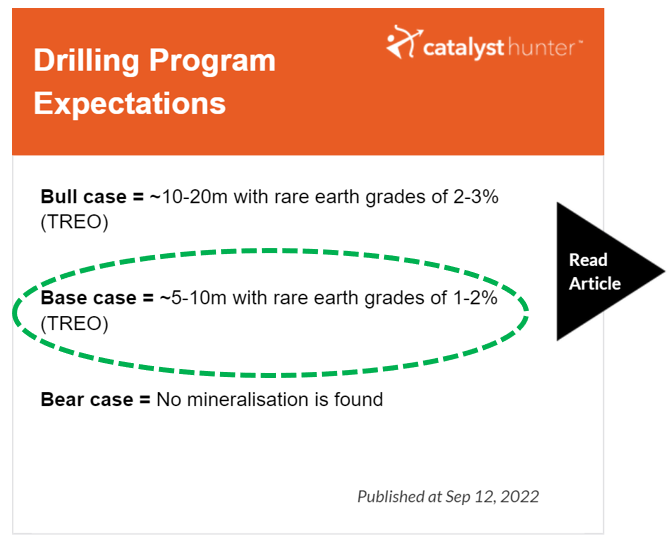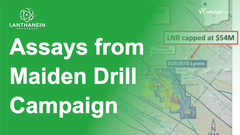LNR releases rare earths assays, big target to test in 2023
Today, our rare earths Investment Lanthanein Resources (ASX:LNR) returned assay results from its maiden drilling campaign in the Gascoyne region, WA.
The hits are shallow (from as little as 6m below the surface) and have a grade that is 3x the global average.
LNR returned a peak hit of 5m at 0.69% TREO from 20m, including 2m at 1.06% TREO (41% NdPr:TREO) from 21m.
Our view here is that this means the results are good enough to potentially be part of the ore used by adjacent and larger neighbours, which includes the next Australian rare earths producer in Hastings Technology Metals (capped at $480M) and advanced explorer, Dreadnought Resources (capped at $280M).
What’s more LNR has now identified over 1km of strike which appears to run almost directly into Hastings’ tenement:

So we think there’s value at Lyons already.
The results also include a hint of niobium mineralisation, a metal we’re increasingly interested in as it shows up on government lists of critical raw materials.
One hole came in with: 1m at 0.71% TREO (47% NdPr:TREO) and 1.20% Nb2O5 from 34m.
In this drilling campaign LNR was primarily pursuing Neodymium (Nd) and Praseodymium (Pr) - and in particular hits with a high ratio of these rare earths.
These are the two rare earths that go into wind turbines and EV permanent magnets - key pillars of the energy transition.
All up we see today’s assays as having satisfied our base case for this round of drilling:

What’s next for LNR? Further assay results from this drilling campaign are expected over December and January. LNR received $200k from the WA government to drill test the outer magnetic rim of the carbonatite structures which LNR has modelled previously - the plan is to drill these targets next year. These are big carbonatite targets that are 2-4km in diameter and go up to 2km deep.






